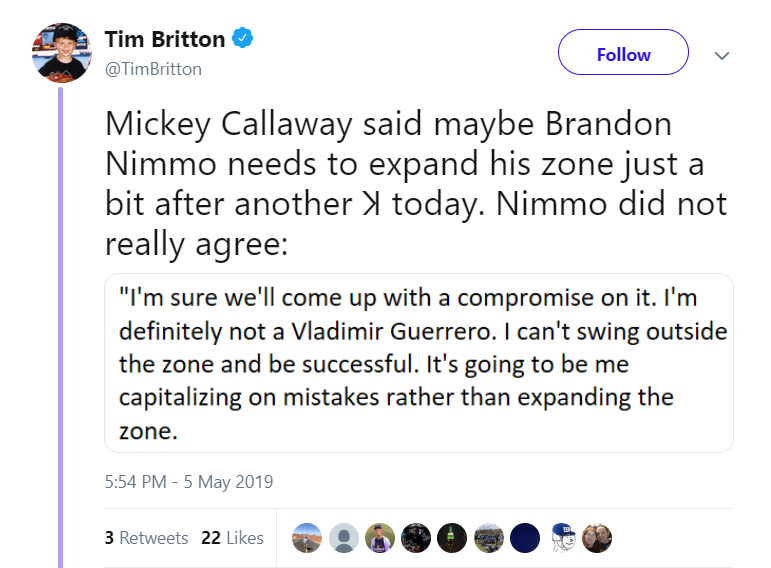The Passed Balls Are Gone, but Is Gary Sanchez a Better Defender?
The 2018 season was a messy one for Gary Sanchez, with an offensive showing that was among the worst in Yankees history, with not a lot of time for him to get into a good rhythm due to many injuries he suffered throughout the season. The 2018 season was also notable for Sanchez with a late-July controversy about his hustle after he failed to run out a ground ball on a misplay that ended the game. Most notable, however, was the great amount of passed balls and wild pitches that Sanchez allowed. Of all catchers to play at least 600 innings in the field in 2018, Sanchez led the pack with 18 passed balls despite playing only 653 innings at catcher, particularly notable because the top catchers in the league can play 1,000 or more innings at catcher in a single season.
Watching Sanchez in the field this season, that issue has seemed to resolve itself, as Sanchez is better than the league average for catchers this season in passed balls and wild pitches allowed. Seeing this improvement, I developed a theory about Sanchez that I was eager to test as the sample of innings got larger. Basically, I began to wonder if Sanchez has been so focused on improving his pitch blocking that he has begun to sacrifice pitch framing and if this change has made Sanchez an overall better defender than he was in 2018. Now, nobody from the Yankees or Sanchez himself has stated that this is the case, and it is good to see improvement from him in this area, but I wanted to know if these improvements are helping him overall. Passed balls are ugly and fans hate to see them because they are so visible and can directly cost a team runs, but framing is an important part of catching, and the impact of good framing can cancel out most blocking deficiencies.
Sanchez was an above-average framer last season, and despite his bad blocking, he was considered a better overall defender than guys like Brian McCann, Salvador Perez, and Francisco Cervelli by the Baseball Prospectus Fielding Runs Above Average (FRAA) metric. His -1.4 FRAA in 2018 ranked as not-great-but-not-bad at 85th out 117 catchers, while at the midpoint of the 2019 season, Sanchez and his -7.6 FRAA ranks 87th out of 91 catchers in the same metric. Knowing this, I felt like I could test out my theory. Read the rest of this entry »



